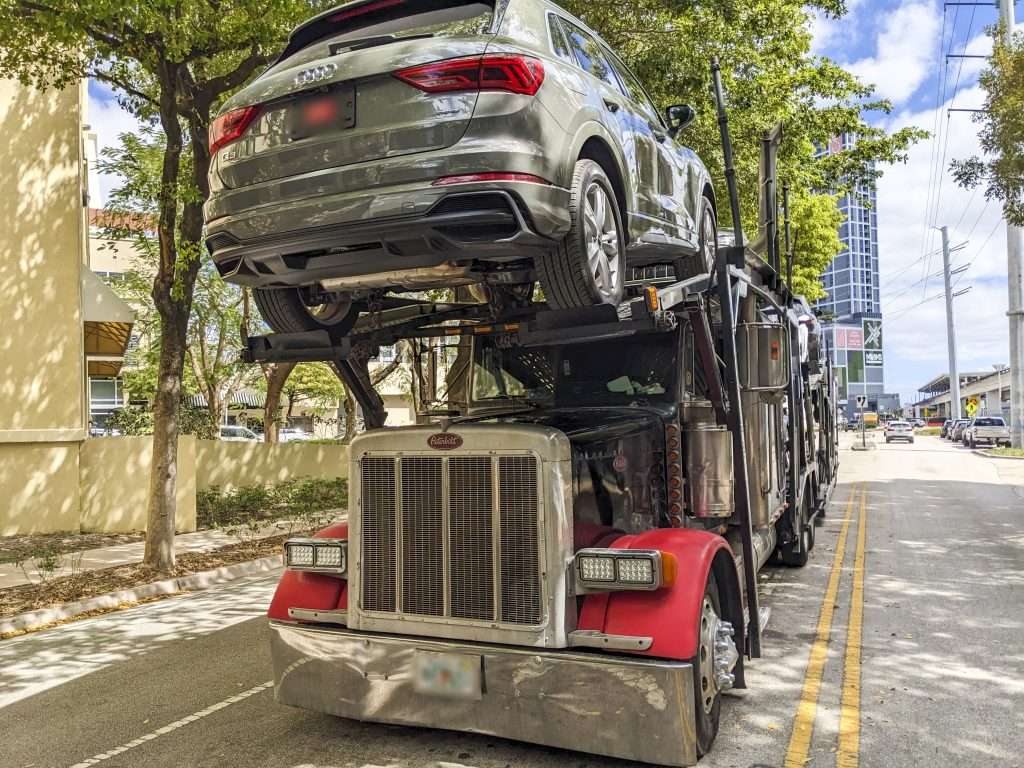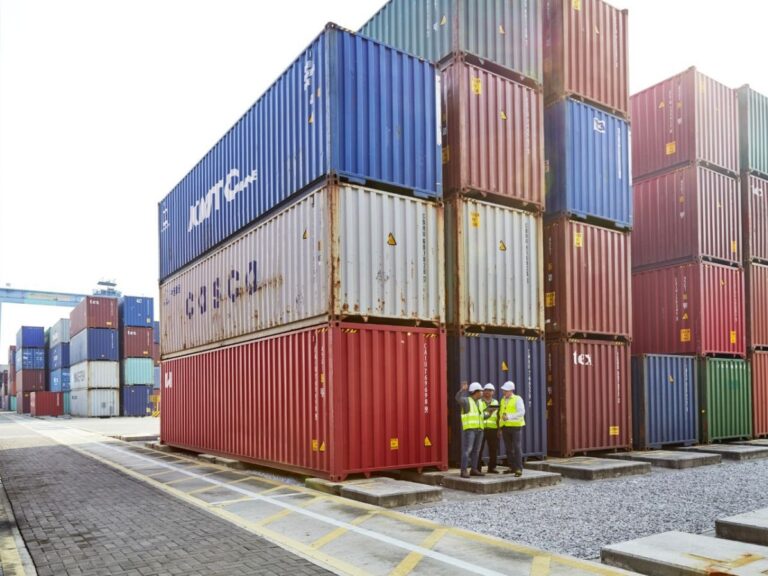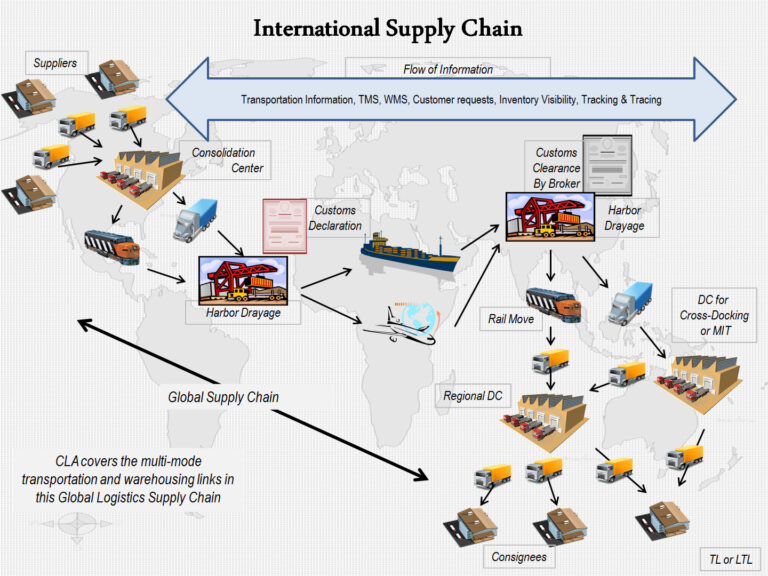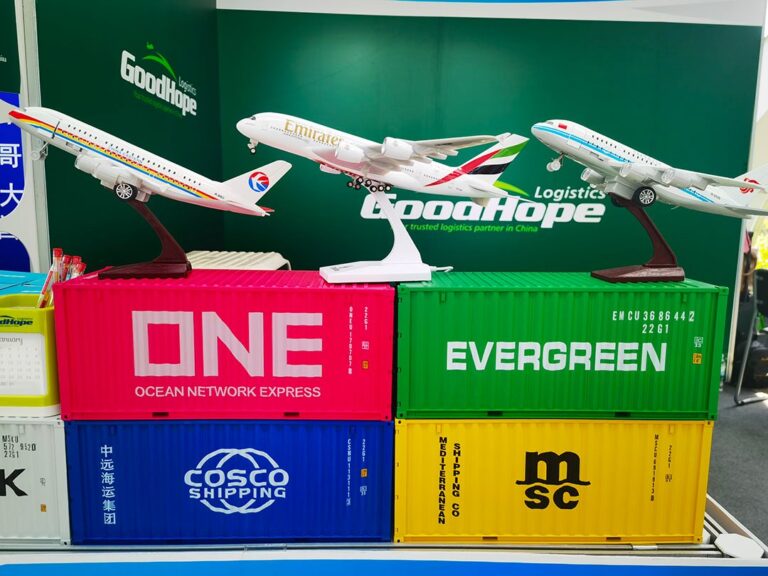Shipping Car From Usa To Canada: The Ultimate Guide (2025)
Your Complete Guide to shipping car from usa to canada
Navigating the Complexities of Cross-Border Vehicle Shipping
Shipping a vehicle from the USA to Canada can be a daunting task for businesses and individuals alike. The complexities involved in cross-border transportation often lead to confusion, delays, and unexpected costs. Whether you are relocating, sending a vehicle for business purposes, or importing a newly purchased car, understanding the logistics, regulations, and costs associated with this process is crucial. Many businesses face challenges such as navigating customs requirements, ensuring compliance with local regulations, and managing transit times—all of which can significantly impact your operations and budget.
In this comprehensive guide, we will break down the essential components of shipping a car from the USA to Canada. First, we will explore the various shipping methods available, including open transport, enclosed transport, and door-to-door services, allowing you to choose the option that best fits your needs and budget.
Next, we will delve into the costs associated with vehicle shipping. Understanding the price range, which typically falls between $800 and $1,000 depending on factors like distance, vehicle type, and chosen service, will help you budget effectively. We will also cover potential additional costs, including import duties, taxes, and fees that may arise based on the vehicle’s origin and specifications.
Transit times are another critical aspect we will address. Knowing how long it typically takes for vehicles to cross the border and arrive at their destination can help you plan your logistics accordingly, especially if you have time-sensitive operations.
Moreover, we will provide insight into the customs processes involved in importing a vehicle into Canada. This includes necessary paperwork, such as the original vehicle title, and the importance of ensuring that your vehicle complies with Canadian safety and environmental standards. Understanding these requirements can streamline your shipping process and prevent costly delays.
Lastly, we will highlight the potential risks involved in shipping vehicles across borders, including damage during transport and compliance issues. By preparing adequately and choosing reliable shipping partners, you can mitigate these risks effectively.
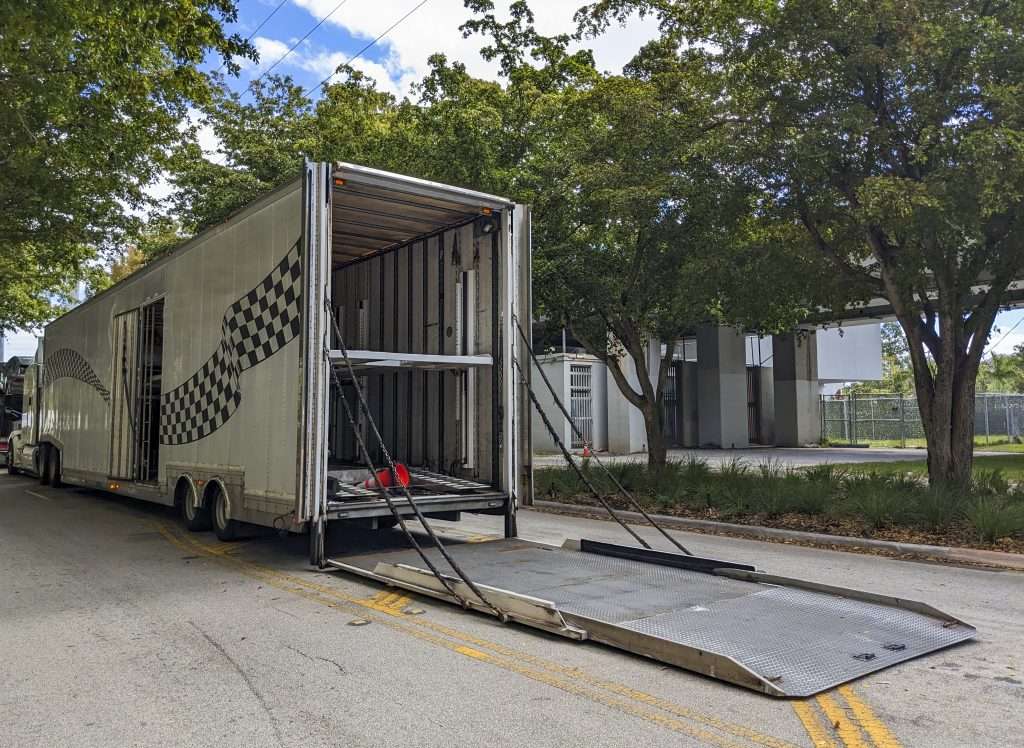
By the end of this guide, you will possess expert knowledge to navigate the intricacies of shipping a car from the USA to Canada efficiently. With the right information and resources at your disposal, you can confidently tackle the challenges of cross-border vehicle shipping and ensure a smooth transition for your vehicle.
Table of Contents
- Your Complete Guide to shipping car from usa to canada
- Understanding Your Shipping Options: A Detailed Comparison
- Deconstructing the Cost: A Full Pricing Breakdown
- Transit Time Analysis: How Long Will It Take?
- Navigating Customs Clearance: A Step-by-Step Guide
- A Practical Guide to Choosing Your Freight Forwarder
- Incoterms 2020 Explained for Shippers
- Risk Management: Identifying and Mitigating Common Shipping Problems
- Frequently Asked Questions (FAQs) for shipping car from usa to canada
- Conclusion: Key Takeaways for Successful Shipping
- Important Disclaimer
Understanding Your Shipping Options: A Detailed Comparison
Overview of Shipping Methods for Transporting Cars from the USA to Canada
When shipping a vehicle from the USA to Canada, selecting the right transportation method is crucial for ensuring timely delivery, cost-effectiveness, and the safety of the vehicle. Each shipping method has unique characteristics that cater to different needs, whether it’s speed, budget, or vehicle type. Below, we present a detailed comparison of various shipping methods, followed by an in-depth breakdown of each option.
| Shipping Method | Best For | Speed | Cost Level | Key Advantages | Key Disadvantages |
|---|---|---|---|---|---|
| Sea FCL | Bulk shipments | Moderate | Moderate | Cost-effective for large volumes; safe | Slower transit times; port fees |
| Sea LCL | Smaller shipments | Moderate | Moderate | Flexible for small loads; lower costs | Longer transit times; potential delays |
| Air | Urgent shipments | Fast | High | Quick delivery; minimal handling | Expensive; limited cargo capacity |
| Rail | Long-distance moves | Moderate | Moderate | Eco-friendly; reliable schedules | Limited routes; longer loading times |
| Express | High-value vehicles | Very fast | High | Door-to-door service; high security | Very expensive; limited availability |
Detailed Breakdown of Each Shipping Method
Sea FCL (Full Container Load)
What It Is:
Full Container Load shipping involves using an entire shipping container to transport vehicles. This method is most suitable for large shipments where multiple vehicles are being transported simultaneously.
When to Use It:
FCL is ideal for businesses looking to ship multiple vehicles at once or for those who want to ensure their vehicle is not mixed with others, minimizing the risk of damage.
Pros:
– Cost-effective for bulk shipments.
– Reduced risk of damage due to dedicated space.
– Lower insurance costs compared to other methods.
Cons:
– Slower transit times compared to air shipping.
– Additional port fees may apply.
– Requires a larger volume to be cost-effective.
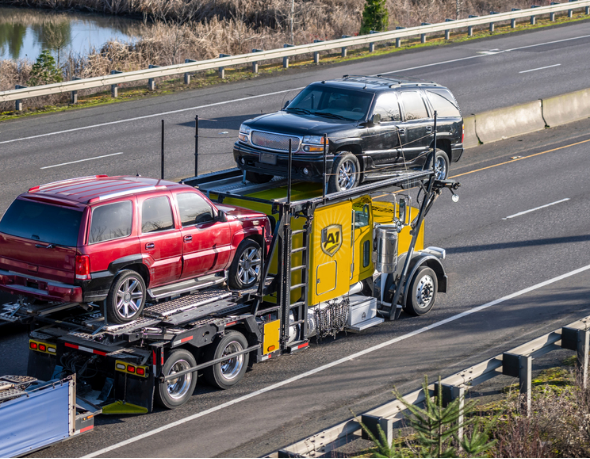
Sea LCL (Less than Container Load)
What It Is:
Less than Container Load shipping allows multiple shippers to share container space. This method is suitable for smaller shipments where the volume does not justify a full container.
When to Use It:
LCL is best for businesses or individuals shipping one or two vehicles without needing a full container.
Pros:
– Flexible shipping options.
– Lower costs compared to FCL.
– Ideal for smaller loads.
Cons:
– Longer transit times due to consolidation and deconsolidation processes.
– Higher risk of damage due to shared space.
– Potential delays in customs clearance.
Air Freight
What It Is:
Air freight involves transporting vehicles via cargo planes. This is the fastest shipping method available for cross-border vehicle transport.
When to Use It:
Air freight is ideal for urgent shipments, high-value vehicles, or when time-sensitive delivery is required.
Pros:
– Quick delivery, often within 1-3 days.
– Minimal handling reduces the risk of damage.
– High security during transit.
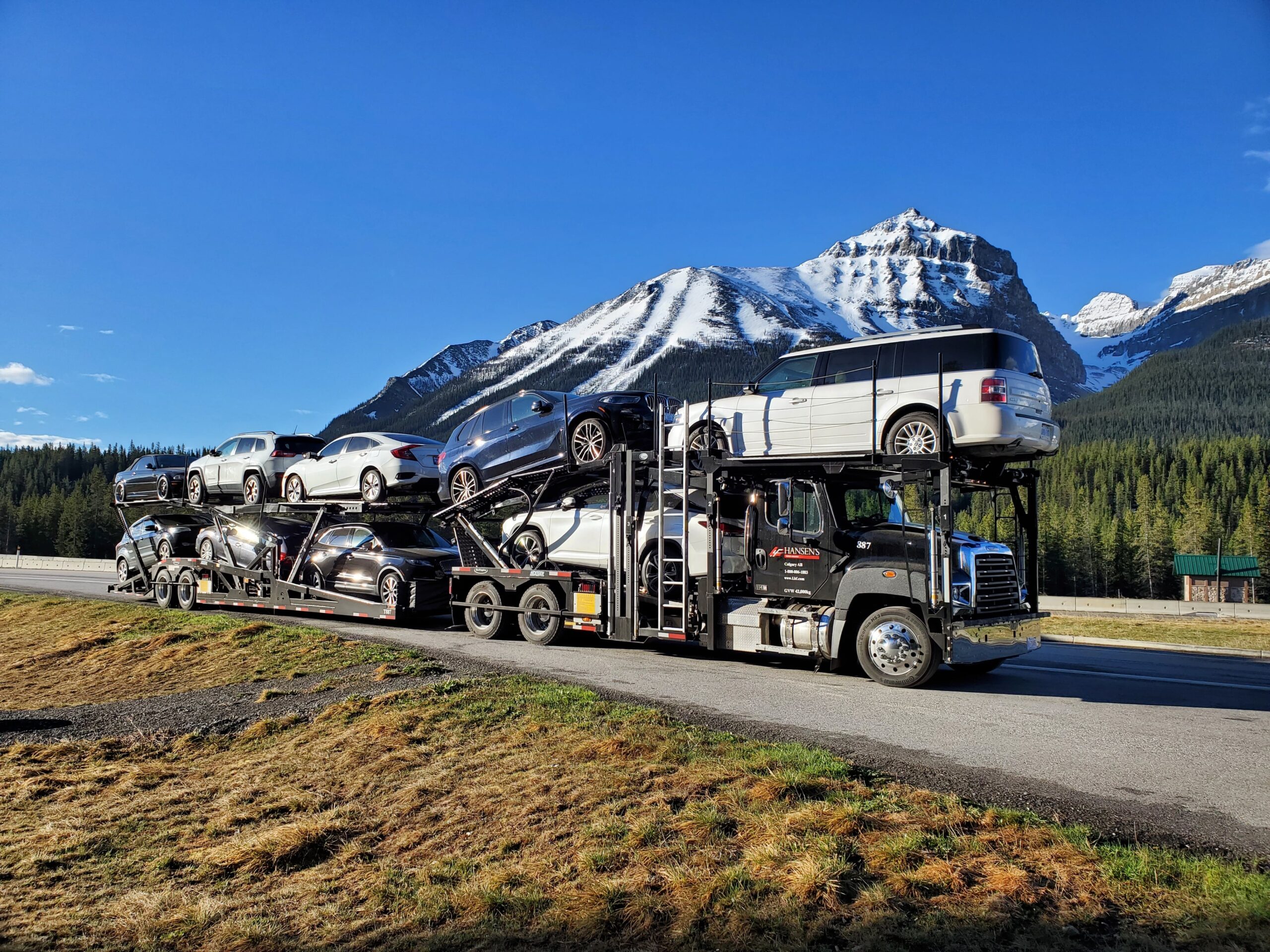
Cons:
– Significantly higher costs compared to other methods.
– Limited cargo capacity; only a few vehicles can be shipped at once.
– Requires special arrangements for oversized vehicles.
Rail Transport
What It Is:
Rail transport involves using freight trains to move vehicles across long distances. This method is eco-friendly and efficient for land transport.
When to Use It:
Rail is suitable for shipping vehicles overland across the USA to Canada, particularly for long distances.
Pros:
– Eco-friendly option with lower carbon footprint.
– Reliable schedules and less impact from road traffic.
– Cost-effective for long distances.
Cons:
– Limited routes; not all destinations are accessible by rail.
– Longer loading and unloading times compared to other methods.
– May require additional trucking services for final delivery.
Express Shipping
What It Is:
Express shipping is a premium service that offers fast, door-to-door delivery for vehicles. This method typically involves a dedicated transport truck.

When to Use It:
Best for high-value vehicles or situations where immediate delivery is critical.
Pros:
– Fastest option available; delivery within days.
– High security and tracking throughout the process.
– Convenient door-to-door service.
Cons:
– Very high costs; not suitable for budget-conscious shippers.
– Limited availability based on location.
– May not be feasible for larger vehicles.
Special Considerations
Multimodal Transport
Multimodal transport combines two or more modes of transportation to move a vehicle. For instance, a vehicle might be shipped by rail to a port, then transported by sea to Canada. This method is beneficial for optimizing time and costs, especially for long-distance shipments.
Advantages:
– Flexibility in logistics planning.
– Cost savings by utilizing the most efficient modes.
– Can access remote locations that are not served by a single mode.
Disadvantages:
– Complexity in coordination and scheduling.
– Increased risk of damage with multiple handling points.
– Potential for delays during transitions.
Specialized Options (RoRo, Break Bulk)
- RoRo (Roll-on/Roll-off): This method involves driving the vehicle directly onto the shipping vessel. It’s a cost-effective and efficient way to transport vehicles without the need for a container.
Pros:
– Lower shipping costs compared to container shipping.
– Fast loading and unloading process.
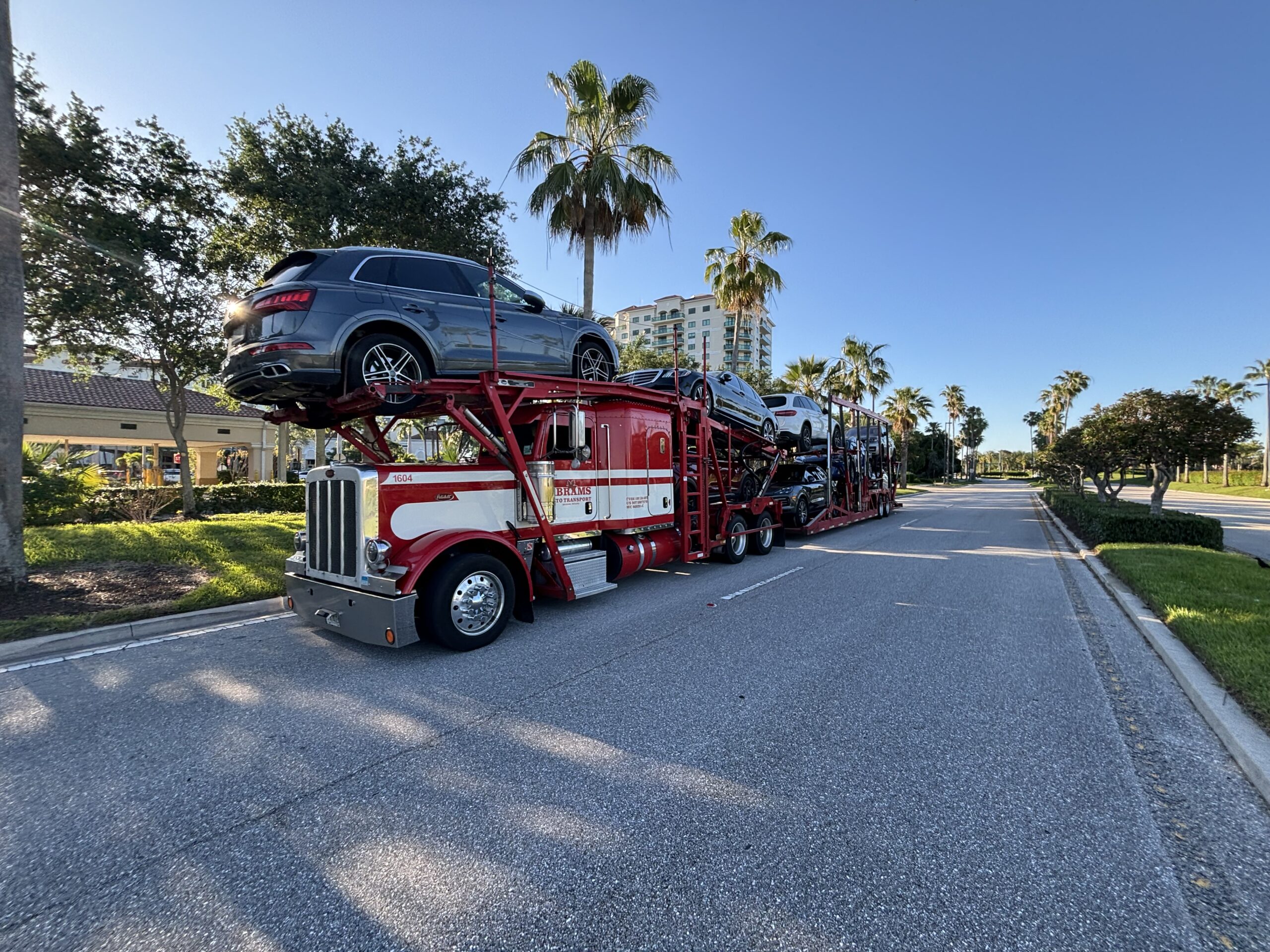
Cons:
– Exposure to weather and potential damage during transit.
– Limited to vehicles that can be driven.
- Break Bulk: This method is used for oversized or non-standard vehicles that cannot fit in a container. Vehicles are loaded individually onto a ship.
Pros:
– Suitable for heavy machinery and large vehicles.
– Flexibility in loading configurations.
Cons:
– Higher risk of damage due to handling.
– Longer shipping times and potential delays.
Conclusion
Choosing the right shipping method for transporting a vehicle from the USA to Canada depends on various factors, including urgency, budget, vehicle type, and shipping volume. By understanding the advantages and disadvantages of each method, businesses and individuals can make informed decisions that align with their logistical needs. Whether opting for the speed of air freight or the cost-effectiveness of rail transport, being aware of the nuances in the shipping process will ensure a smoother experience and successful delivery.
Deconstructing the Cost: A Full Pricing Breakdown
Understanding the Cost of Shipping a Car from the USA to Canada
Shipping a vehicle across international borders involves multiple cost components that can significantly influence the total expense. Understanding these categories helps international shippers, importers, and business owners make informed decisions and budget effectively.
Main Cost Components
When planning to ship a car from the USA to Canada, you will encounter three primary categories of costs:
- Main Freight Charges
- Origin Charges
- Destination Charges
Main Freight Charges
This is typically the largest expense in the shipping process. Main freight charges cover the actual transportation of the vehicle from the point of origin in the USA to the destination in Canada.
Factors Influencing Main Freight Charges:
- Distance: The distance between the pick-up and drop-off locations plays a crucial role. Longer distances typically result in higher costs.
- Type of Vehicle: Larger vehicles, such as SUVs and trucks, may incur higher fees due to their size and weight. Luxury vehicles may also attract additional charges due to their value.
- Shipping Method: Options include open transport (more economical) and enclosed transport (more expensive but offers better protection).
- Seasonality: Demand fluctuates throughout the year. High-demand periods, such as summer or holidays, may lead to increased rates.
Origin Charges
These are fees associated with preparing the vehicle for shipment at the origin location. They can vary based on the service provider and specific requirements.
Common Origin Charges:
- Inspection Fees: Some companies may charge for inspecting the vehicle before shipping.
- Pick-up Fees: If the shipping company is responsible for collecting the vehicle, a pick-up fee may apply.
- Documentation Fees: Preparing the necessary paperwork, such as customs forms and vehicle titles, can incur additional costs.
Destination Charges
Destination charges are incurred once the vehicle arrives in Canada. These fees can vary based on the destination’s proximity to major transportation hubs and local regulations.
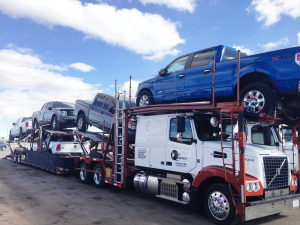
Typical Destination Charges:
- Delivery Fees: This includes costs for transporting the vehicle from the port or terminal to the final destination.
- Customs Clearance Fees: These are charges for handling the customs process, ensuring compliance with Canadian import regulations.
- Taxes and Duties: Depending on the vehicle’s origin and value, import duties (up to 6.1%) and taxes (5% GST and potential PST or HST) may apply.
Example Pricing Table
To provide a clearer picture of potential costs, here’s a sample pricing table for shipping containers and air freight:
| Service | 20ft Container | 40ft Container | LCL (Less than Container Load) | Air Freight (per kg) |
|---|---|---|---|---|
| Cost Estimate | $2,000 – $3,500 | $3,500 – $6,000 | $300 – $600 (varies by weight) | $5 – $10 |
Disclaimer: These estimates are indicative and can vary widely based on specific shipping routes, service providers, vehicle type, and market conditions. Always obtain quotes from multiple providers for accurate pricing.
How to Reduce Costs
When shipping a vehicle from the USA to Canada, consider the following actionable tips to save money:
-
Choose Open Transport: Opt for open transport instead of enclosed shipping. While it offers less protection, it is generally more affordable.
-
Plan Ahead: Book your shipment well in advance to avoid peak season pricing and allow for better rates.
-
Consolidate Shipments: If you have multiple vehicles to ship, consider consolidating them into one shipment to save on costs.
-
Research and Compare Quotes: Always obtain quotes from several shipping companies. Comparing prices can help you find the best deal.
-
Understand Customs Regulations: Familiarize yourself with customs regulations to avoid unexpected fees related to documentation or compliance.
-
Look for Discounts: Some shipping companies offer discounts for first-time customers or military personnel. Inquire about available promotions.
-
Negotiate: Don’t hesitate to negotiate terms and prices with shipping companies. They may be willing to provide a better rate to secure your business.
Conclusion
Understanding the cost breakdown for shipping a car from the USA to Canada is essential for effective budgeting and planning. By considering the main freight, origin, and destination charges, along with actionable cost-saving strategies, international shippers and business owners can navigate the complexities of cross-border vehicle transport more effectively.
Transit Time Analysis: How Long Will It Take?
Understanding Transit Times for Shipping a Car from the USA to Canada
When considering shipping a vehicle from the USA to Canada, understanding the factors influencing transit time is crucial for effective planning. Various elements can affect how long it will take for your vehicle to arrive at its destination, and being aware of these can help you manage expectations and logistics.
Factors Influencing Transit Time
-
Shipping Mode: The method of transport you choose plays a significant role in determining transit time. For instance, shipping by truck is generally faster than shipping by rail or sea. While road transport can take a few days, rail transport may add a week or more to the timeline, depending on the route.
-
Port Congestion: Port congestion can significantly affect transit times, especially during peak seasons or holidays. Delays at loading or unloading ports can lead to longer wait times, making it essential to consider the time of year when planning your shipment.
-
Customs Clearance: The customs process is another critical factor influencing transit time. Each vehicle must pass through customs, where documentation is reviewed and duties may be assessed. If all paperwork is in order, this process can take a few hours to a couple of days. However, any discrepancies or additional inspections can lead to extended delays.
-
Routes: The specific routes taken can also influence delivery times. Direct routes are typically faster, while detours due to road conditions or construction can add extra days. Understanding the geography and common traffic patterns can help in choosing the best route for your shipment.
-
Weather Conditions: Weather can have a significant impact on transit times. Severe weather conditions such as snowstorms or heavy rains can delay road transport and lead to longer delivery times. It’s advisable to monitor weather forecasts along the route during the shipment period.
Estimated Transit Time Table
Here’s a practical table outlining estimated transit times for shipping a vehicle from various origins in the USA to Canada:
| Origin | Destination | Truck (Days) | Rail (Days) |
|---|---|---|---|
| New York | Toronto | 2-4 | 5-7 |
| Los Angeles | Vancouver | 5-7 | 7-10 |
| Chicago | Montreal | 3-5 | 6-8 |
| Miami | Calgary | 6-8 | 10-12 |
| Dallas | Ottawa | 4-6 | 8-10 |
Context and Explanation
The estimates provided in the table reflect typical transit times from port-to-port and may vary based on the factors discussed earlier. It’s important to note that these timelines are approximate and can change due to unexpected circumstances such as traffic issues, additional customs checks, or weather-related disruptions.
When planning for your vehicle shipment, consider building in extra time for potential delays. This is especially important for businesses that rely on timely vehicle delivery for operations. It’s advisable to communicate with your shipping provider to receive updates throughout the transit process and to ensure all necessary documentation is prepared well in advance to facilitate smooth customs clearance.
In conclusion, while the estimated transit times provide a general framework, the actual duration can vary based on several operational factors. By understanding these variables and planning accordingly, you can better manage the logistics of shipping a car from the USA to Canada, ensuring a more efficient and timely process.
Navigating Customs Clearance: A Step-by-Step Guide
The Process Explained
Shipping a car from the USA to Canada involves navigating a complex customs clearance process. To ensure a seamless transition across the border, follow these essential steps:
-
Pre-Shipping Preparation:
Before initiating the shipping process, ensure that the vehicle is eligible for import into Canada. This includes checking the vehicle’s compliance with Canadian safety and environmental standards through the Registrar of Imported Vehicles (RIV). -
Gather Required Documentation:
Compile all necessary documents, including the vehicle title, proof of ownership, and identification. These documents will be required for customs clearance and should be sent to the appropriate border crossing at least 72 hours before the shipment. -
Select a Shipping Method:
Choose between open or enclosed transport options, depending on your budget and the level of protection required for your vehicle. Enclosed transport offers more protection but typically comes at a higher cost. -
Book the Shipment:
Contact a reputable auto transport company to schedule your vehicle shipment. Provide them with all necessary details, including pick-up and delivery locations, vehicle specifications, and preferred shipping dates. -
Customs Submission:
Once the vehicle is at the border, the carrier will submit the required documentation to customs. Ensure that all forms are filled out correctly to avoid delays. The customs officer will inspect the vehicle and verify the documentation. -
Payment of Duties and Taxes:
Upon successful clearance, you’ll be required to pay any applicable import duties and taxes. These fees are typically calculated based on the vehicle’s value and origin. -
Post-Clearance Registration:
After customs clearance, you’ll need to register the vehicle in Canada. This process includes obtaining a Canadian license plate and ensuring that the vehicle meets provincial regulations.
Essential Documentation
To facilitate a smooth customs clearance process, ensure you have the following documents ready:
-
Vehicle Title: The original title or a certified copy from the Department of Motor Vehicles (DMV) is crucial for proving ownership. This document must be submitted to customs at least 72 hours prior to shipping.
-
Bill of Lading: This document serves as a contract between you and the shipping company, detailing the terms of transport. It outlines the pick-up and delivery points, the condition of the vehicle, and the shipping charges.
-
Commercial Invoice: This is necessary for tax purposes and should include details such as the vehicle’s make, model, year, and VIN (Vehicle Identification Number). It also states the sale price of the vehicle.
-
Packing List: Although it might seem unnecessary for a vehicle shipment, a packing list can provide additional details about the vehicle, such as its condition before shipping, which can be useful in case of disputes.
-
Proof of Identity: A government-issued photo ID is required to verify your identity during the customs process.
Duties, Taxes, and HS Codes
Understanding duties, taxes, and HS Codes is essential for budgeting and ensuring compliance when shipping a vehicle from the USA to Canada.
-
HS Codes: The Harmonized System (HS) is an internationally standardized system of names and numbers to classify traded products. Each vehicle type has a specific HS Code that determines the applicable duties and taxes. For example, passenger vehicles and trucks may have different codes.
-
Duties and Taxes Calculation:
- Import Duty: Vehicles manufactured in the U.S., Mexico, or Canada typically qualify for duty-free import under the USMCA agreement. However, vehicles manufactured outside North America are subject to a 6.1% import duty based on their value.
- Goods and Services Tax (GST): All imported vehicles incur a 5% GST.
- Provincial Sales Tax (PST) or Harmonized Sales Tax (HST): Depending on the province of registration, additional taxes may apply. For instance, Ontario imposes an 8% PST, while British Columbia’s PST can reach up to 20% for certain vehicle types.
Common Problems & Solutions
Navigating customs clearance can present challenges. Here are some common issues and how to avoid them:
- Incomplete Documentation:
- Problem: Missing or incomplete documents can lead to delays or even denial of entry.
-
Solution: Double-check that all required documents are completed and submitted well in advance of shipping. Keeping copies of all documents for your records is also advisable.
-
Non-Compliance with Import Regulations:
- Problem: Vehicles not meeting Canadian safety or environmental standards may be denied entry.
-
Solution: Verify your vehicle’s compliance with the RIV before shipping. If modifications are needed, arrange for these to be completed before the shipment.
-
Underestimating Duties and Taxes:
- Problem: Unexpected duties and taxes can inflate shipping costs.
-
Solution: Research and calculate potential duties and taxes based on your vehicle’s value and origin. Consult with your shipping company for accurate estimates.
-
Transport Damage:
- Problem: Vehicles can be damaged during transit.
-
Solution: Opt for enclosed transport if your budget allows, and ensure that the shipping company has adequate insurance coverage.
-
Miscommunication with Shipping Companies:
- Problem: Misunderstandings can lead to delays or additional costs.
- Solution: Maintain clear communication with your chosen shipping company and confirm all details regarding timelines, costs, and services provided.
By understanding and preparing for these steps and potential issues, you can ensure a smoother process when shipping your vehicle from the USA to Canada.
A Practical Guide to Choosing Your Freight Forwarder
Understanding the Importance of Choosing the Right Freight Forwarder
When it comes to shipping a car from the USA to Canada, selecting the right freight forwarder is crucial for ensuring a smooth and efficient transport process. A reliable freight forwarder will not only help you navigate the complexities of cross-border logistics but also ensure compliance with all customs and regulatory requirements. Here’s a practical guide to help you make an informed decision.
Key Qualities to Look For
- Experience and Expertise:
-
Choose a freight forwarder with a proven track record in auto transport, particularly between the USA and Canada. Their experience will significantly reduce the chances of costly mistakes.
-
Robust Network:
-
A well-established network of carriers and partners is essential for timely deliveries. Look for a forwarder with connections to reputable carriers that specialize in vehicle transport.
-
Licensing and Compliance:
-
Ensure the freight forwarder is fully licensed and compliant with international shipping regulations. This includes having the necessary permits to operate in both the USA and Canada.
-
Effective Communication:
-
A good freight forwarder should prioritize communication. They should provide you with a dedicated account manager who can address your queries and keep you updated throughout the shipping process.
-
Customs Knowledge:
- Your forwarder should have in-depth knowledge of customs regulations specific to vehicle importation, including documentation requirements and potential duties. This expertise can save you time and prevent delays at the border.
Sourcing Checklist: Steps to Choose Your Freight Forwarder
- Define Your Needs:
-
Determine your specific shipping requirements, such as the type of vehicle, shipping timeline, and any special handling needs. This will help you identify the most suitable freight forwarders.
-
Research Potential Forwarders:
-
Utilize online resources, industry forums, and recommendations from peers to compile a list of potential freight forwarders. Look for those specializing in auto transport to Canada.
-
Request Quotes:
-
Contact your shortlisted freight forwarders to request detailed quotes. Ensure they provide a breakdown of costs, including shipping fees, insurance, and any additional charges.
-
Ask Questions:
-
Inquire about their experience with shipping vehicles to Canada, their process for handling customs documentation, and how they manage unexpected issues such as delays or damages.
-
Check References:
- Request references from previous clients. Reach out to these references to get firsthand insights into the forwarder’s reliability, communication, and overall service quality.
Red Flags to Watch Out For
-
Lack of Transparency: If a freight forwarder is unwilling to provide clear information about pricing, processes, or documentation, consider this a warning sign.
-
Poor Communication: Delayed responses or difficulty in reaching your point of contact can indicate a lack of professionalism and may lead to complications during the shipping process.
-
No Industry Credentials: If a forwarder cannot provide proof of licensing or industry certifications, this could suggest they do not comply with necessary regulations.
-
Negative Reviews: Consistent negative feedback from previous clients, particularly regarding damages, delays, or poor customer service, should raise concerns about their reliability.
-
Unclear Insurance Policies: If the forwarder does not offer clear information about their insurance coverage or liability in case of damage during transport, this could expose you to unnecessary risks.
Conclusion
Choosing the right freight forwarder for shipping a car from the USA to Canada involves careful consideration of their experience, network, and communication capabilities. By following the sourcing checklist and being vigilant about red flags, you can ensure a smooth and efficient vehicle transport experience. Remember, investing time in selecting a reputable freight forwarder is crucial for protecting your valuable asset and ensuring compliance with all necessary regulations.
Incoterms 2020 Explained for Shippers
Understanding Incoterms in Vehicle Shipping
Incoterms, or International Commercial Terms, are a set of globally recognized rules that define the responsibilities of buyers and sellers in international transactions. They clarify who is responsible for various aspects of the shipping process, including costs, risks, and logistics, making them essential for international shippers, especially when transporting vehicles across borders like from the USA to Canada. Understanding these terms can help streamline the shipping process and minimize potential disputes.
Key Incoterms Table
| Incoterm | Who Pays for Transport? | Where Risk Transfers? | Best for |
|---|---|---|---|
| EXW (Ex Works) | Buyer | At the seller’s premises | Buyers wanting full control over the shipping process |
| FOB (Free on Board) | Seller | Once the goods are loaded onto the transport vessel | Buyers who want to manage the shipping process after the vehicle is loaded |
| CIF (Cost, Insurance, and Freight) | Seller | At the destination port | Buyers seeking comprehensive service, including insurance |
| DDP (Delivered Duty Paid) | Seller | At the buyer’s location | Buyers wanting a hassle-free experience with all duties and taxes included |
EXW (Ex Works)
Under the Ex Works (EXW) incoterm, the seller makes the vehicle available at their premises or another named place (factory, warehouse, etc.). The buyer assumes all responsibility for transportation costs and risks from that point onward. For instance, if you purchase a vehicle in the USA and the seller offers it under EXW terms, you will need to arrange for shipping, customs clearance, and any other logistics to get the car to Canada. This option provides buyers with full control but requires them to have a good understanding of the shipping process.
FOB (Free on Board)
Free on Board (FOB) signifies that the seller is responsible for transportation costs and risks until the vehicle is loaded onto the shipping vessel at the port of departure. After the vehicle is on board, the risk transfers to the buyer. For example, if you’re shipping a car from a port in the USA to Canada, the seller will handle all costs and logistics until the vehicle is loaded onto the ship. This term is beneficial for buyers who prefer the seller to manage the initial shipping phase but want to take over once the vehicle is on the vessel.
CIF (Cost, Insurance, and Freight)
CIF means that the seller covers the costs of transport, insurance, and freight to the designated port of destination. The risk transfers to the buyer once the vehicle is loaded onto the ship. This incoterm is ideal for buyers who want a more comprehensive shipping service, as it includes insurance against loss or damage during transport. For example, if you are importing a car to Canada under CIF terms, the seller will take care of all shipping costs and insurance until the vehicle reaches the Canadian port, providing peace of mind regarding potential risks.
DDP (Delivered Duty Paid)
Delivered Duty Paid (DDP) places maximum responsibility on the seller. Under this incoterm, the seller is accountable for all costs and risks associated with transporting the vehicle to the buyer’s location, including customs duties and taxes. For instance, if you’re relocating to Canada and buy a car under DDP terms, the seller will handle everything from shipping to customs clearance and delivery to your doorstep. This option is particularly attractive for buyers seeking a hassle-free experience, as it simplifies the logistics and ensures compliance with import regulations.
Conclusion
Understanding Incoterms is crucial for international shippers, especially when transporting vehicles from the USA to Canada. By clearly defining responsibilities, costs, and risk transfer points, these terms help streamline the shipping process and avoid misunderstandings. Whether you opt for EXW, FOB, CIF, or DDP, choosing the right incoterm can significantly impact your shipping experience, making it essential to align your choice with your logistical capabilities and needs.
Risk Management: Identifying and Mitigating Common Shipping Problems
Introduction
Proactive risk management is essential in the logistics and freight forwarding industry, particularly when shipping vehicles across international borders. The process of transporting a car from the USA to Canada involves various challenges, including regulatory compliance, potential damages, and unexpected delays. By identifying potential risks early and implementing effective mitigation strategies, shippers can minimize disruptions, safeguard their investments, and ensure a smooth transition across borders. This guide outlines common shipping problems and offers practical solutions to mitigate these risks.
Risk Analysis Table
| Potential Risk | Impact | Mitigation Strategy |
|---|---|---|
| Cargo Damage | Financial loss and potential liability | Ensure vehicles are securely loaded and protected with proper packing materials. Opt for reputable carriers with good safety records. |
| Delays | Increased shipping costs and customer dissatisfaction | Plan shipments well in advance, allowing buffer time for customs clearance and unforeseen circumstances. Use tracking systems to monitor progress. |
| Customs Holds | Delays and potential fines | Ensure all documentation is complete and accurate before shipping. Familiarize yourself with customs regulations and requirements for both countries. |
| Regulatory Compliance | Fines or vehicle rejection at border | Conduct thorough research on import regulations, including the Registrar of Imported Vehicles (RIV) requirements. Consult with customs brokers if necessary. |
| Incorrect Documentation | Delays and potential legal issues | Double-check all documents, including vehicle titles and identification, ensuring they match the requirements for cross-border transport. Utilize a checklist to verify documentation. |
| Unforeseen Costs | Budget overruns | Prepare a comprehensive budget that includes potential taxes, duties, and fees. Consult with shipping experts to obtain accurate cost estimates and consider cargo insurance to cover unexpected expenses. |
Cargo Insurance Explained
Cargo insurance is a critical component of risk management when shipping vehicles from the USA to Canada. It provides financial protection against a variety of risks that could lead to loss or damage during transportation. Here’s a deeper look into what cargo insurance covers, the types available, and why it is essential.
What It Covers
Cargo insurance typically covers damages that occur during transit, including:
- Physical Damage: Loss or damage to the vehicle due to accidents, theft, vandalism, or natural disasters.
- Loading and Unloading: Coverage for damages that occur while the vehicle is being loaded onto or unloaded from the transport vehicle.
- Total Loss: Protection against the total loss of the vehicle due to unforeseen circumstances.
Types of Cargo Insurance
-
All-Risk Coverage: This is the most comprehensive form of cargo insurance, covering nearly all risks of physical loss or damage unless explicitly excluded in the policy.
-
Named Perils Coverage: This policy covers only specific risks that are explicitly mentioned in the insurance agreement, such as fire, theft, or collision.
-
General Liability Insurance: While not specifically cargo insurance, this type of coverage can protect against third-party claims for bodily injury or property damage that may occur during the shipping process.
Why It’s Essential
Investing in cargo insurance is vital for several reasons:
- Financial Protection: It shields shippers from significant financial losses due to damages or total loss of vehicles during transit.
- Peace of Mind: Knowing that your vehicle is covered allows shippers to focus on other aspects of their business without the constant worry of potential losses.
- Compliance with Regulations: Certain transport companies may require proof of insurance before agreeing to transport vehicles, ensuring compliance with industry standards.
Conclusion
Shipping a vehicle from the USA to Canada is a complex process that involves various risks. By proactively identifying potential problems and implementing effective mitigation strategies, shippers can protect their assets, ensure compliance with regulations, and enhance customer satisfaction. Additionally, securing appropriate cargo insurance provides a safety net against unforeseen circumstances, allowing businesses to operate with confidence. By following these guidelines, shippers can navigate the intricacies of cross-border vehicle transport more effectively, ultimately leading to smoother operations and successful outcomes.
Frequently Asked Questions (FAQs) for shipping car from usa to canada
1. What are the steps involved in shipping a car from the USA to Canada?
Shipping a car from the USA to Canada involves several key steps:
– Request a Quote: Start by obtaining a quote from a reputable shipping company.
– Prepare Documentation: Gather necessary documents such as the vehicle title, proof of identity, and any import forms required by Canadian authorities.
– Schedule Pickup: Coordinate with the shipping company to schedule the pickup of your vehicle.
– Customs Clearance: Ensure all customs paperwork is completed and submitted at least 72 hours before shipping.
– Transport: The vehicle is then transported to the designated border crossing.
– Delivery: Finally, the vehicle is delivered to your specified address in Canada.
2. What documents are required to ship a vehicle to Canada?
To ship a vehicle to Canada, you will need the following documents:
– Original Vehicle Title: Or a certified copy from the DMV.
– Photo ID: A government-issued identification is required.
– Customs Forms: Complete any necessary customs forms, such as the RIV form if applicable.
– Bill of Sale: If purchasing a vehicle, include a bill of sale.
– Proof of Insurance: This may also be requested by the shipping company.
3. Are there any import duties or taxes when shipping a car to Canada?
Yes, when importing a vehicle to Canada, you may be subject to various duties and taxes:
– Import Duty: Generally, vehicles manufactured outside North America incur a 6.1% duty based on the vehicle’s value.
– Goods and Services Tax (GST): A 5% GST applies to all imported vehicles.
– Provincial Sales Tax (PST) or Harmonized Sales Tax (HST): Depending on the province, additional taxes may apply. For example, Ontario has an 8% PST.
4. How long does it take to ship a car from the USA to Canada?
The shipping duration can vary based on several factors, including the shipping method and distance. Generally, it can take anywhere from 1 to 2 weeks. Ground transport is usually quicker, while ocean freight might take longer. Always check with your shipping provider for estimated timelines.
5. What is the cost of shipping a car from the USA to Canada?
Shipping costs typically range from $800 to $1,500, depending on factors such as:
– Distance: The further the distance, the higher the cost.
– Vehicle Size and Type: Larger vehicles or luxury cars may incur additional fees.
– Shipping Method: Open transport is generally cheaper than enclosed transport.
6. Can I drive my car across the border instead of shipping it?
Yes, you can drive your car across the border, but this may not be practical for long distances or if you need to avoid customs complexities. Shipping allows you to bypass potential delays and the hassle of border crossing, especially for long-distance moves.
7. What is the difference between a Bill of Lading (BOL) and an Air Waybill (AWB) in vehicle shipping?
A Bill of Lading (BOL) is a document issued by the carrier to acknowledge receipt of the vehicle for transport. It serves as a contract between the shipper and carrier. An Air Waybill (AWB) is used primarily in air transport and serves a similar purpose but is specific to air freight. In vehicle shipping, the BOL is the more relevant document.
8. Do I need a customs bond to ship a vehicle to Canada?
While a customs bond is not always required for shipping a vehicle to Canada, it may be necessary if the vehicle is being imported under certain conditions, such as if it is not owned by the shipper. Always consult with your shipping company or customs broker to determine if a bond is needed for your specific situation.
9. What is the Registrar of Imported Vehicles (RIV) program?
The RIV program is a Canadian initiative to ensure that imported vehicles meet safety and environmental standards. Vehicles must be registered with the RIV upon arrival, and a fee is charged. The program provides guidelines and requirements for compliance, making it essential for anyone importing a vehicle into Canada.
10. What should I do if my vehicle is not admissible to Canada?
If your vehicle is deemed inadmissible, you have a few options:
– Modify the Vehicle: Make necessary modifications to meet Canadian standards.
– Export the Vehicle Back: Arrange for the vehicle to be returned to the USA.
– Consult with a Customs Broker: Seek professional advice to understand your options and any potential solutions.
Conclusion: Key Takeaways for Successful Shipping
Effective Planning is Essential
Shipping a vehicle from the USA to Canada involves several critical steps that require thorough planning. Understanding your specific reason for transport—whether it’s a permanent move, temporary visit, or vehicle purchase—will dictate the necessary paperwork and procedures. For instance, Canadian Registered Returning Vehicles and Temporary Imports have distinct requirements that must be met to ensure smooth transit across borders.
Choose the Right Partners
Selecting a reliable shipping partner is crucial. Look for companies that specialize in international auto transport and possess a strong track record in handling customs paperwork and logistics. A dedicated account executive can provide valuable assistance throughout the process, ensuring that you have all necessary documentation ready and submitted in a timely manner. This includes the vehicle title, photo ID, and any additional forms required by Canadian authorities.
Budgeting for Costs
Costs associated with shipping a vehicle can vary significantly based on distance, vehicle type, and shipping method. On average, expect to budget between $800 and $1,000 for transport. Be mindful of additional expenses such as import duties, taxes, and potential modifications to meet Canadian standards. For vehicles manufactured outside North America, understanding the applicable duties—like the 6.1% import duty and 5% GST—will help you accurately calculate your total expenses.
Take Action for a Seamless Experience
In conclusion, successful vehicle shipping from the USA to Canada hinges on effective planning, choosing the right partners, and understanding the costs involved. By proactively addressing these factors, you can streamline the process and mitigate potential headaches.
Now is the time to take the next step—reach out to a trusted auto transport service to obtain a personalized quote and start your journey towards seamless cross-border vehicle shipping. Your vehicle’s safe arrival in Canada is just a decision away!
Important Disclaimer
⚠️ Important Disclaimer
The information in this guide is for educational purposes only and does not constitute professional logistics advice. Rates, times, and regulations change frequently. Always consult with a qualified freight forwarder for your specific needs.
